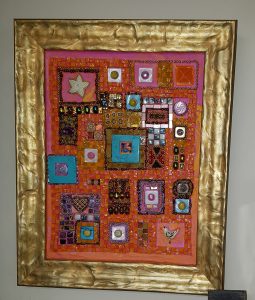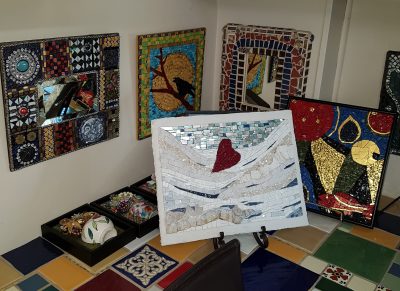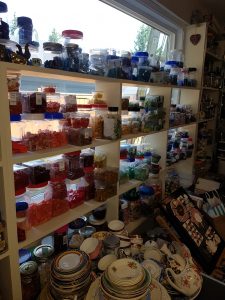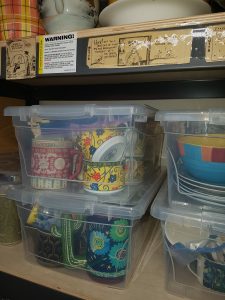 I received a lot of feedback on last week’s blog post about writing slowly. Most people who reached out seemed rather regretful that they don’t write faster. While it’s true that writing quickly can sharpen our skills and lead to more published books, the most important thing is consistent productivity, whether you write slowly or quickly.
I received a lot of feedback on last week’s blog post about writing slowly. Most people who reached out seemed rather regretful that they don’t write faster. While it’s true that writing quickly can sharpen our skills and lead to more published books, the most important thing is consistent productivity, whether you write slowly or quickly.
Here are some tips for staying productive even in the slow lane:
Choose your writing project carefully. Committing to a story you’re excited about will give you forward momentum and provide motivation.
Consider your personal time factor. Look objectively at how you currently use your time. Acknowledge the very real demands you face (outside work, children, aging parents) but also be realistic about where and how you waste time.
Set realistic writing goals. Base your goal on what you know will work, given your lifestyle and time constraints. Don’t overreach. Figure out what you can comfortably write in a week and schedule it in. Whether you set a weekly word or page count, or whether you commit to writing at a certain time, commitment is the key word in that sentence. And that leads to the next tip:
Be accountable. Share your goal with a partner, another writer, an online or in person writing group. It’s even better if they have a similar goal; you can motivate and encourage each other.
Keep your story top of mind. Have a copy of your work in progress readily available on your laptop, tablet, or in print form. Open the file so you see it first thing in the morning. Pull it out on your lunch break at work. Reading what you’re written, even if you get pulled away and can’t meet that day’s (or that week’s) goal, will pull you back into the story more quickly when you do return to it.
Minimize distractions as much as you can. Shut the door to your room or find a quiet space. Turn off social media. Wear noise cancelling headphones (it worked for me when I lived next door to a band!)
Bite off small chunks. Write for fifteen or thirty minutes. Set a timer and don’t stop writing until it goes off. Chances are, when it does, you won’t want to stop.
And speaking of stopping, one of the keys to consistent productivity is taking regular writing breaks. Yes, you read that right. Scheduled breaks help with productivity. More on that next week.
 Just as a fictional character can make a book shine, it’s the people we care about who bring the heart and love and emotion to our lives.
Just as a fictional character can make a book shine, it’s the people we care about who bring the heart and love and emotion to our lives. Last week, I finished doing a substantive revision on No Right Thing. Revising, as I’ve said before, is one of my favorite parts of the writing process. Polishing and tweaking can take a story from good to great, and I think No Right Thing is one of the best YA novels I’ve written so far. A big shout out to Melanie Jeffs at Crwth Press for comments and suggestions that gave me the springboard I needed to dive in and make some changes.
Last week, I finished doing a substantive revision on No Right Thing. Revising, as I’ve said before, is one of my favorite parts of the writing process. Polishing and tweaking can take a story from good to great, and I think No Right Thing is one of the best YA novels I’ve written so far. A big shout out to Melanie Jeffs at Crwth Press for comments and suggestions that gave me the springboard I needed to dive in and make some changes.
 Here it is nearly the end of August; September is right around the corner. Soon school will be back in session, routines will be more in force and I’ll be back to blogging every week. For now, we’re still settling into our new home and getting used to the house and the neighborhood. As well as welcoming rabbits, squirrels, dear and raccoon to our yard, we have a family of quail that stops by fairly often. Mom (or maybe Dad) stands guard on a fence post while the rest of the family scurries along the ground. Fortunately, Team Sheltie has yet to see the quail parade. We might build a quail house next year. It’s on the list. Right now though, I’m busy revising No Right Thing, doing some freelance editing jobs and organizing my office. Oh, and finding a few minutes here and there to read. Here’s what I’m reading this month:
Here it is nearly the end of August; September is right around the corner. Soon school will be back in session, routines will be more in force and I’ll be back to blogging every week. For now, we’re still settling into our new home and getting used to the house and the neighborhood. As well as welcoming rabbits, squirrels, dear and raccoon to our yard, we have a family of quail that stops by fairly often. Mom (or maybe Dad) stands guard on a fence post while the rest of the family scurries along the ground. Fortunately, Team Sheltie has yet to see the quail parade. We might build a quail house next year. It’s on the list. Right now though, I’m busy revising No Right Thing, doing some freelance editing jobs and organizing my office. Oh, and finding a few minutes here and there to read. Here’s what I’m reading this month: The final few pages of a novel should bring a sense of completion and ideally some satisfaction or fulfillment too (which is why I love a well-written happily ever after). At the same time, a good ending should be logical, appropriate and have a sense of inevitability about it. It’s an art, hitting those perfect notes when writing a book. But it’s an art that allows for revising and tweaking until you’re satisfied with the story you’ve written.
The final few pages of a novel should bring a sense of completion and ideally some satisfaction or fulfillment too (which is why I love a well-written happily ever after). At the same time, a good ending should be logical, appropriate and have a sense of inevitability about it. It’s an art, hitting those perfect notes when writing a book. But it’s an art that allows for revising and tweaking until you’re satisfied with the story you’ve written. In fact, I’m planning another mosaic project. And that’s another thing about endings. Done well, a good ending always brings with it the possibility of a new beginning, a fresh start.
In fact, I’m planning another mosaic project. And that’s another thing about endings. Done well, a good ending always brings with it the possibility of a new beginning, a fresh start.








 Canadian writers might want to take note of two quickly approaching deadlines. Some deadlines might bring with them a sense of urgency or even dread, but these are what you could call happy deadlines.
Canadian writers might want to take note of two quickly approaching deadlines. Some deadlines might bring with them a sense of urgency or even dread, but these are what you could call happy deadlines. I’m not particularly patient, nor am I especially self-indulgent. If I have a job to do, I like to get on with it quickly and efficiently.
I’m not particularly patient, nor am I especially self-indulgent. If I have a job to do, I like to get on with it quickly and efficiently. Here’s a blast from the past. . . a blog post I wrote in 2013 that’s as true today as it was back then.
Here’s a blast from the past. . . a blog post I wrote in 2013 that’s as true today as it was back then.
Comments